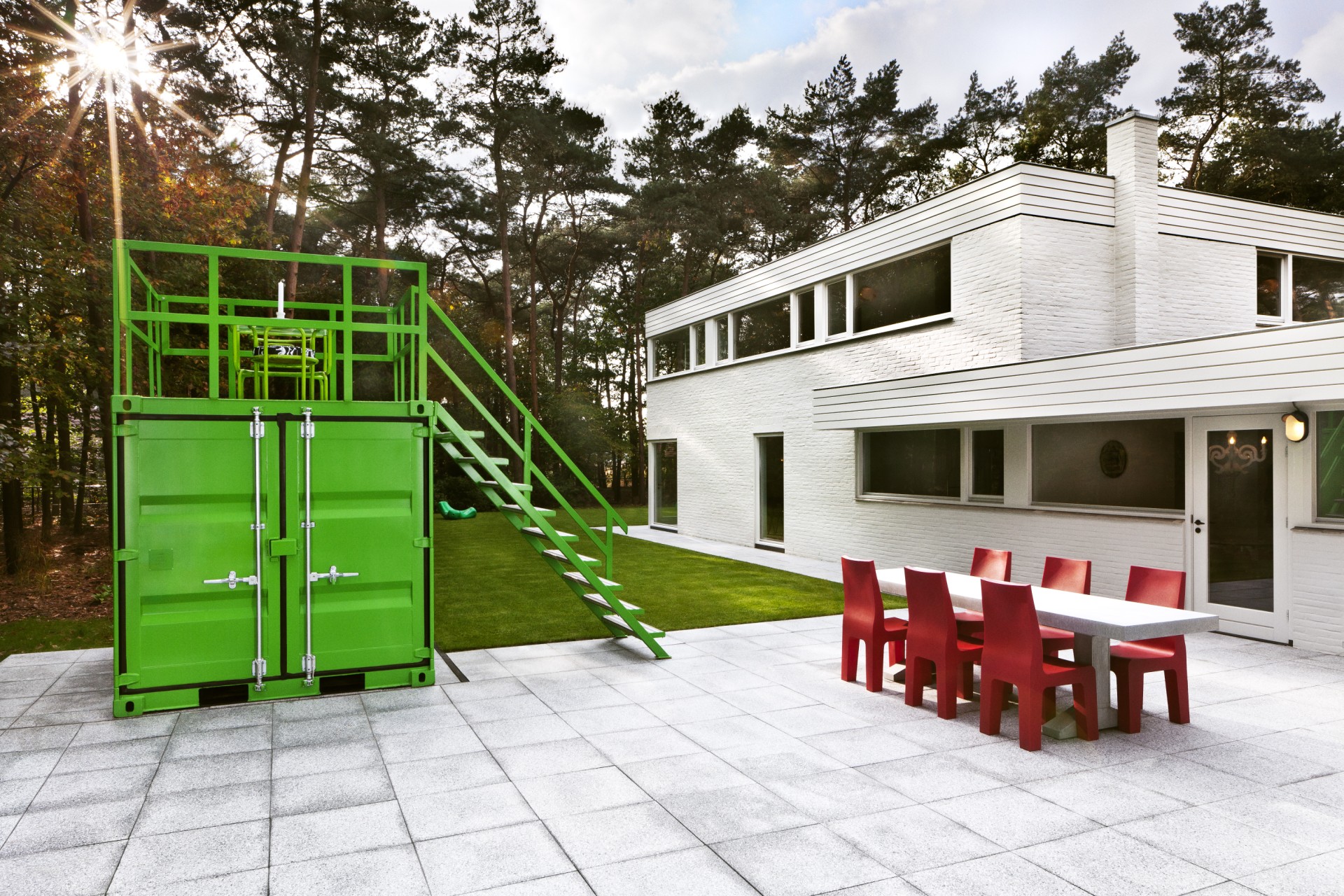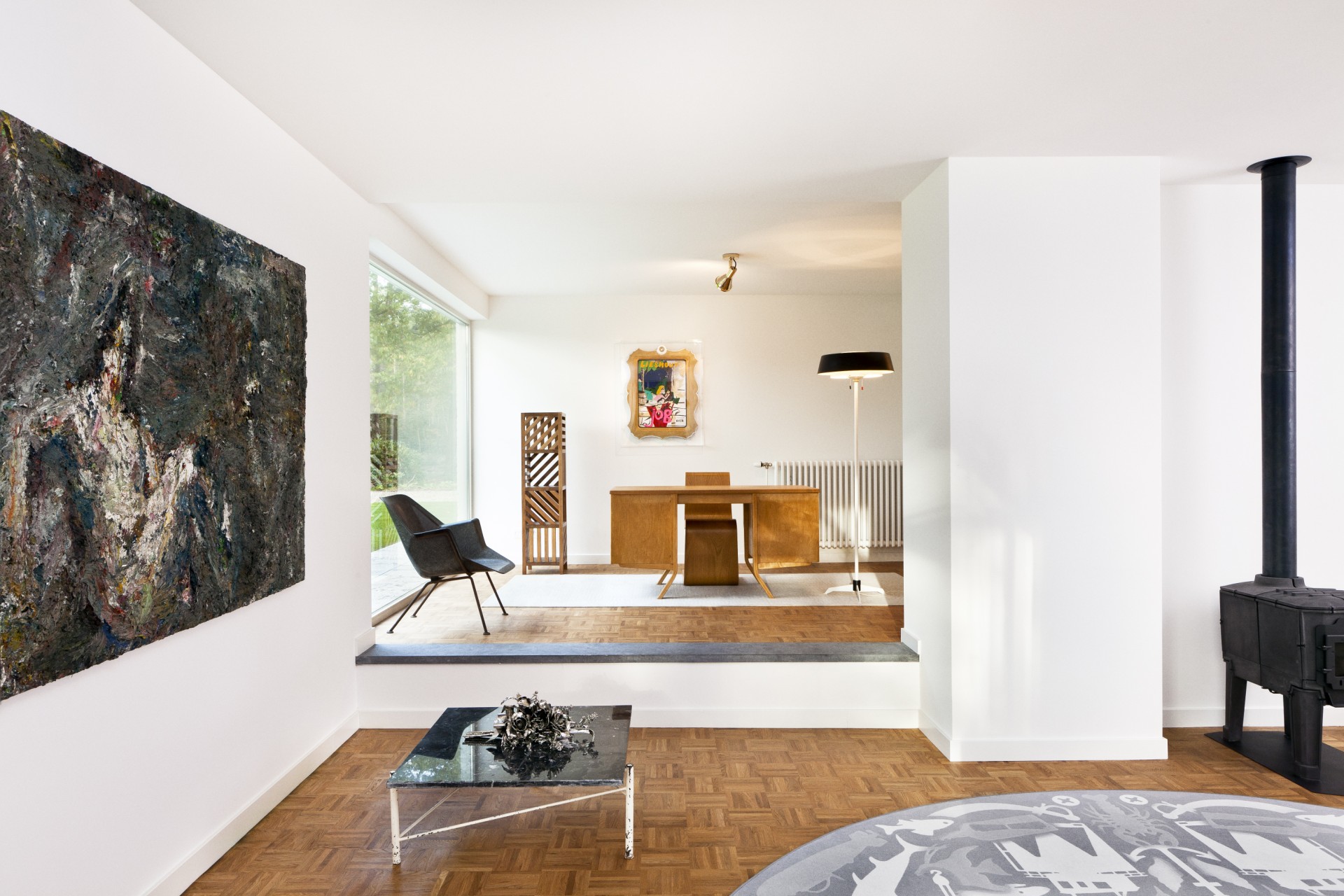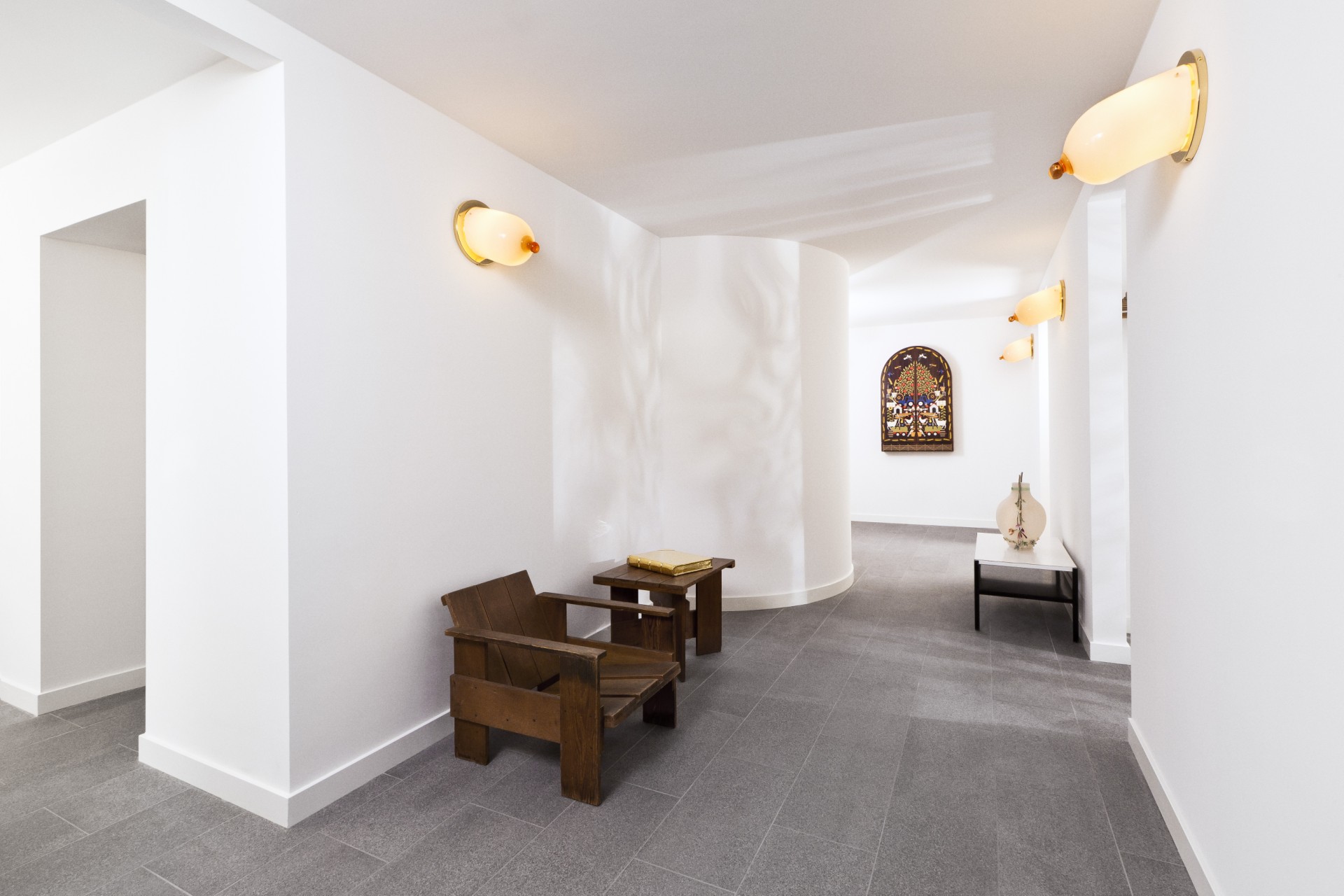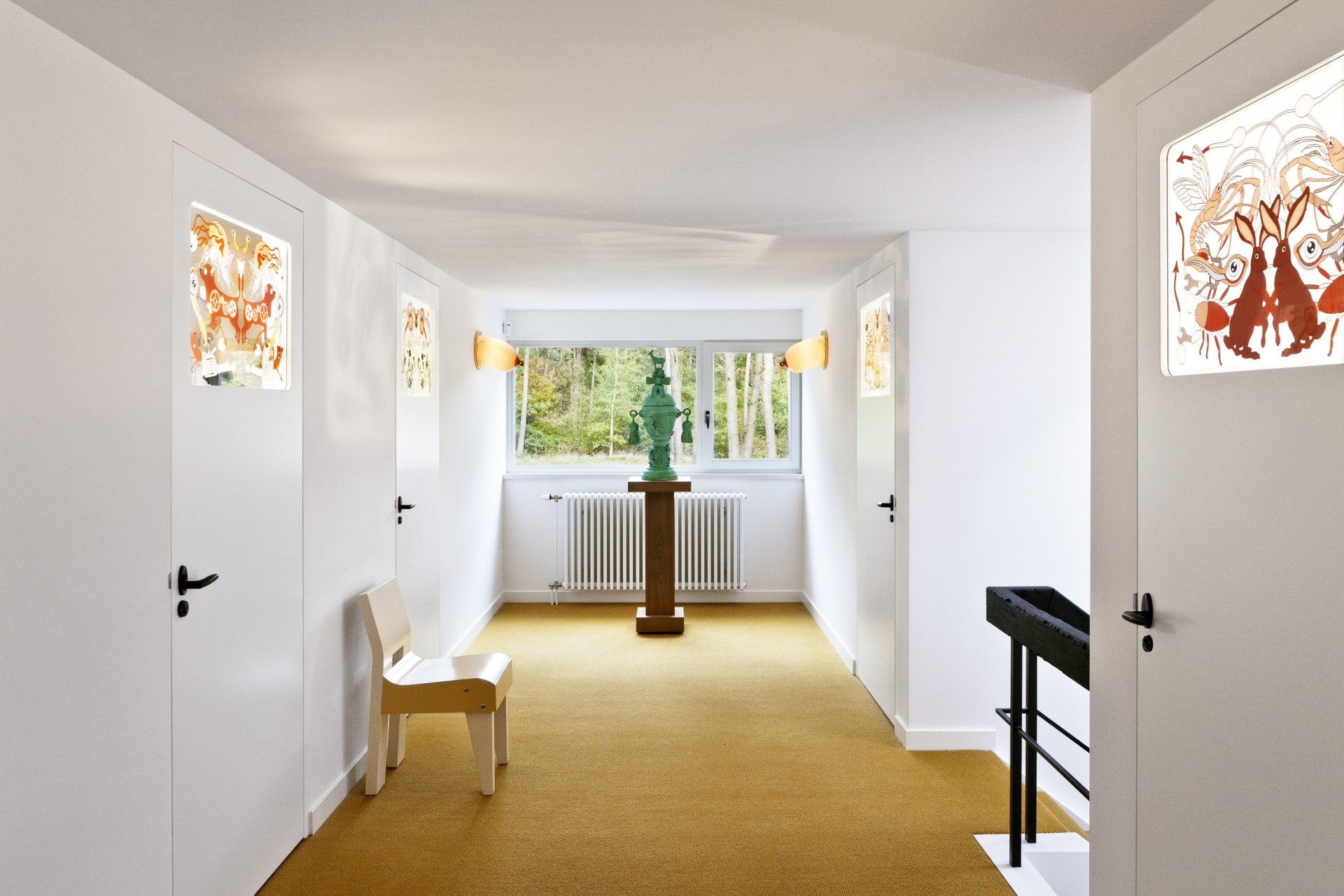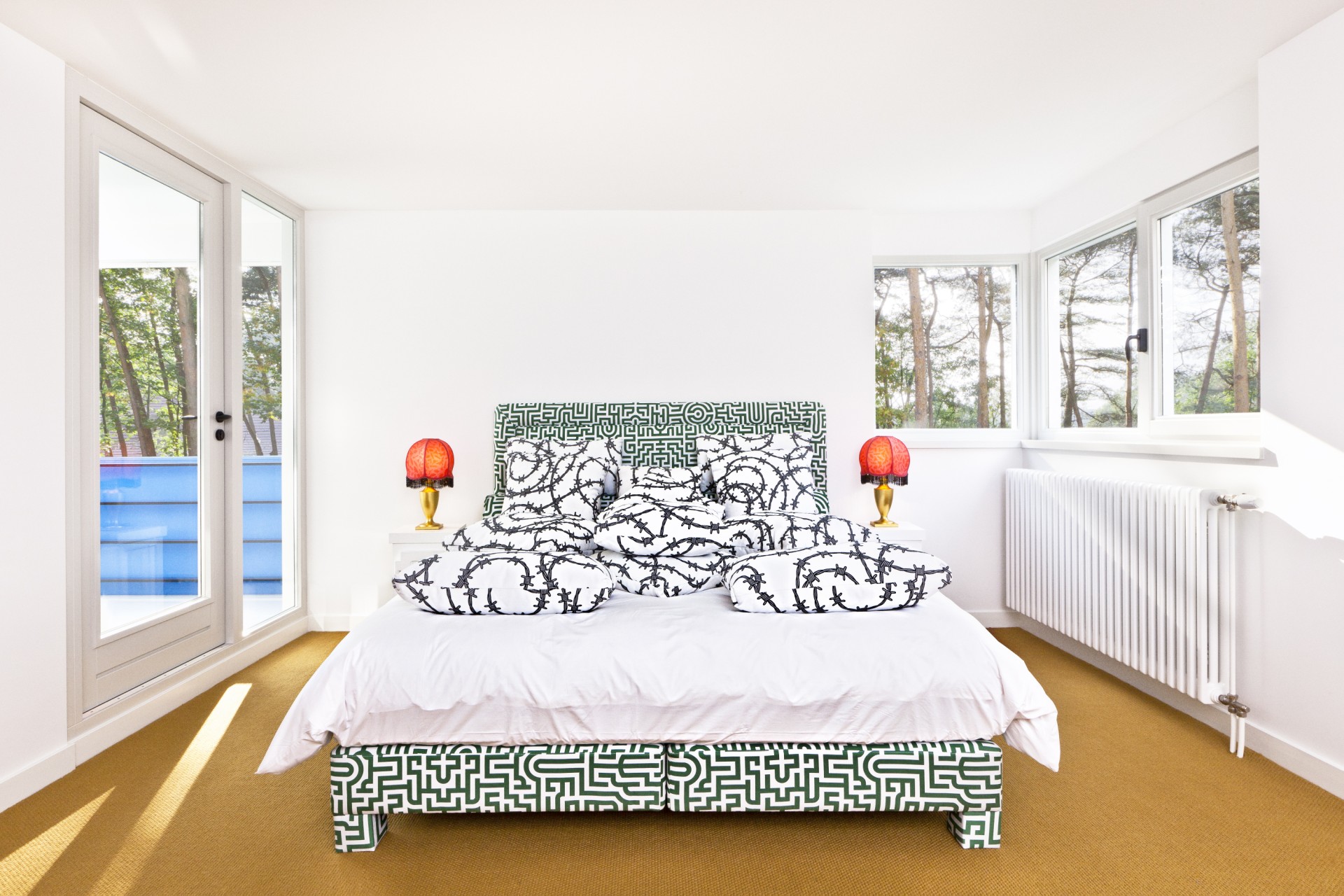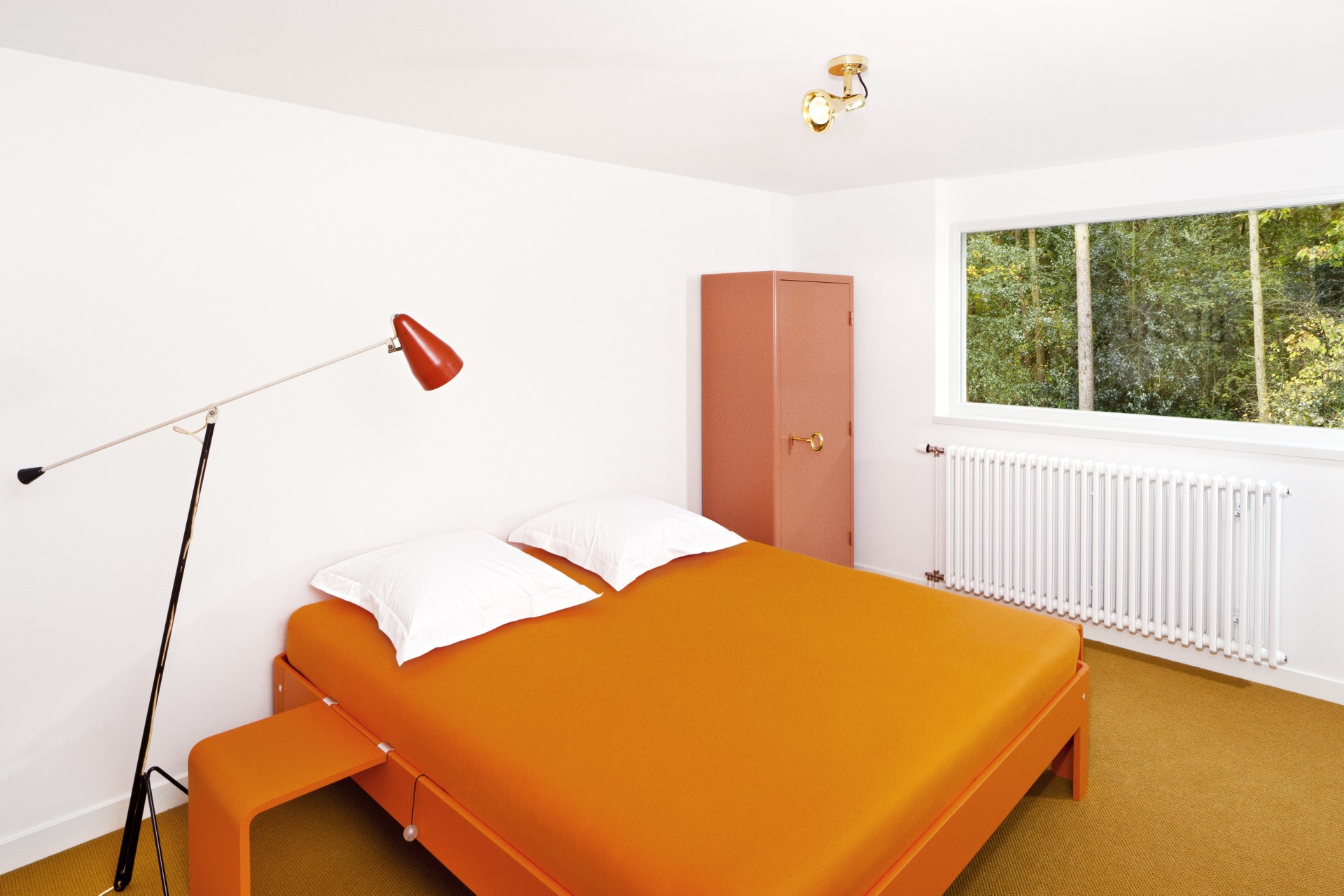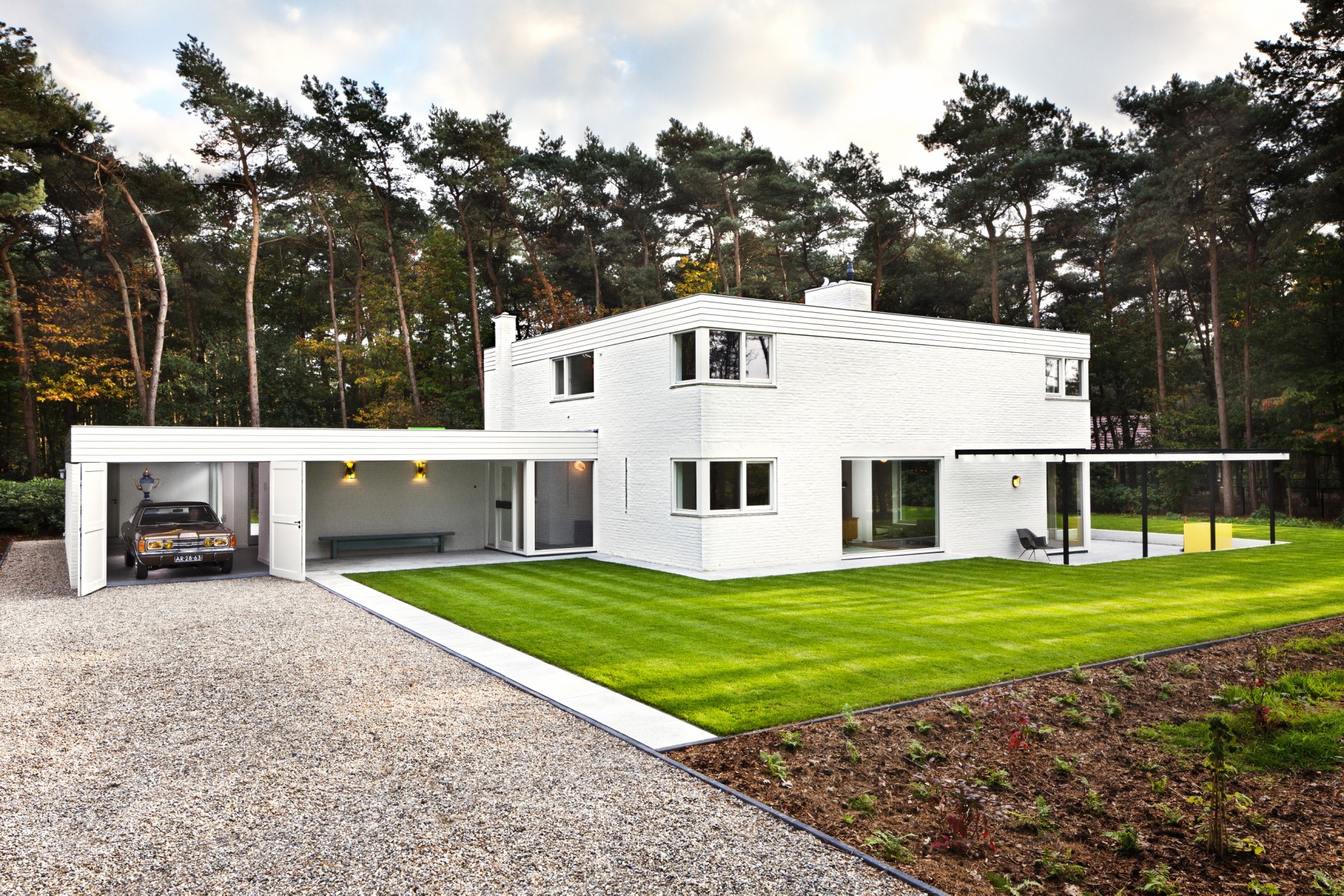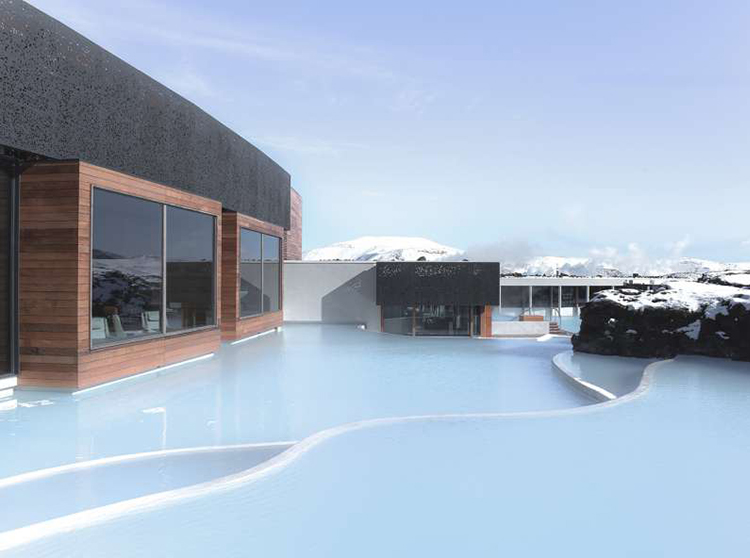Back in the 1950s and 60s, architect Gerrit Rietveld and his contemporaries made quite a stir in the quite village of Bergeyk, near Eindhoven. It all started when Weverij de Ploeg, a weaving mill inspired by socialist ideals and one of the leading actors in Dutch design during the postwar period, commissioned Gerrit Rietveld to design its factory.
This project for De Ploeg led to other prestigious assignments, both public facilities and private villas. Many were given to important Dutch architects like Rietveld and his peers. In the course of the 1960s, Bergeyk was transformed from a rural village to a typical suburban area where managers of companies like Philips had villas in the woods. But it was more than just a showplace for the new capitalism. Thanks to institutions like De Ploeg, Bergeyk had also become an established cultural landmark that attracted prominent designers, architects and artists.
Along with textile producer De Ploeg, the influential Dutch furniture company ’t Spectrum was also situated in Bergeyk. Spectrum’s chief designer Martin Visser – who was also one of Holland’s foremost art and design experts and collaborated with Rietveld on his house in Bergeyk – brought artists like Donald Judd, Sol LeWitt and Anselm Kiefer to the village for varying lengths of time.But everything comes to an end, and in the economic crisis of the 1980s, it became punishingly expensive to run a manufacturing company in the Netherlands. Both De Ploeg and ‘t Spectrum had found themselves struggling to survive. About five years ago, De Ploeg closed the doors of its Rietveld factory once and for all, and since then a great deal of thought has gone into creating a new cultural identity for this landmark building.
Even though its original purpose has faded, the distinctive architecture of Bergeyk still reflects the glory days of Dutch functionalism or, if you prefer, post-war modernism. Last year Studio Job bought one of the local suburban villas, in a quiet spot surrounded by an acre of forest. The property actually has its own 200-meter sandy access road, a quite exceptional feature in the Netherlands. The house was commissioned in 1958 by mr. Kruip who was the director of a cigar manufacturing company called Royal Agio Cigars. Kruip invited one of Rietveld’s pupils, the architect D.L. Sterenberg, to design a functional and modern villa for him, his wife and their children. Sterenberg, strongly influenced by his master, designed this characteristic modernist villa with a flat roof, a highly functional and cost-efficient design. The Kruip family occupied the villa from 1960 to 2009.
"As you can imagine, the house was in need of thorough renovation, and for the past ten months, alongside all our other projects, Studio Job has been in the construction business. We have aimed to maintain the character and authentic design of the property and to restore it to its original glory according to today’s standards. We are supporters of reusing and recycling rather than demolishing, for not only ecological but also cultural reasons.
For years we have been amassing knowledge and artefacts from the reconstruction period, when functionality and industrialism were still genuine, deeply felt values. Studio Job Gallery has a rare museum-quality design collection focusing on Dutch (and some Belgian) design from the 1950s and 60s. It includes such designers as Rietveld (Gerrit and Wim), Friso Kramer, Martin Visser and Cees Braakman, as well as brands like Pastoe, Gispen and ‘t Spectrum.
I am personally fascinated with time, and with the way our history evolves. The conceptual breakthroughs of an earlier period can now be what holds us back – we all recognize that. Yet they remain inspiring and visually appealing. Over the past years, collecting historic designs has been an enlightening and worthwhile activity in its own right, but now that Studio Job has purchased the villa in Bergeyk, we finally have a context in which to display this collection.
When the exhibition Reconstruction opens, for once Studio Job House will be a Gesamtkunstwerk offering the perfect synthesis of modernism and sculpturalism: the past, when design had to be functional, and the present, when design must be personal. Under one roof (and in the garden, designed by a follower of the late landscape architect Mien Ruys) we will unite contemporary designers like Piet Hein Eek, Richard Hutten and Viktor & Rolf with a selection of pieces from the Studio Job collection.
We are proud to announce that the iconic Dutch graphic designer Wim Crouwel has designed a beautiful work of art for the house, incorporating his typeface New Alphabet (1967). We consider this a central element of our project, like a bridge between periods, styles and generations. Joep van Lieshout created the six-metre-long outdoor sculpture Food Cart (2007). Joep’s nephew, the artist Erik van Lieshout has also contributed some important works like Buffet (2009).
But beyond that, we have worked with iconic companies like Royal Auping, Royal Mosa and Van Besouw to furnish Studio Job House. Auping delivered the classic Auronde beds by Frans de la Haye from 1972 in the authentic colours. Mosa provided tiles by Kho Liang Ie, while Van Besouw re-editioned a 1950s carpet. Venini produced its new Tits Lamps, while Moooi added a playful note. And when we found out that Hansgrohe has an exclusive collection with Ronan & Erwan Bouroullec, we asked them to supply all our taps.
Studio Job House will be an open house, a fresh platform for art and design, a House-museum where visitors can discover our fascinations, artistic creations and designs in an ideal context. The perfect place!
Next to Studio Job Gallery (Antwerp) and Studio Job Lounge (inside the Groninger Museum), Studio Job House is the third new semi-public initiative to emerge from our magic hat! We would love to show you around during Dutch Design Week in Eindhoven. Let me give you a tour while Nynke serves home-baked apple pie!" -Job Smeets, Antwerp, 2011
CREDITS
production
Studio Job
concept & creative direction
Nynke Tynagel, Job Smeets
lenders
Ars Usu Foundation, Jansen-van Dishoeck collection, Galerie Guido W. Baudach, Galerie Willy Schoots,
Instaal, Mid Mod, Vandersteen heirs, Studio Job Gallery
producers
Bod’or, Gispen, Glaifa, Hansgrohe, Lampe Textiles, Lensvelt, Moooi, Nodus, Pastoe, Raak, Radson,
Royal Auping, Royal Mosa, Royal Tichelaar Makkum, ‘t Spectrum, Val Saint Lambert, Van Besouw Tapijt,
Venini, Villeroy & Boch, Weltevree
artists
Baas & den Herder, Anthon Beeke, Ronan & Erwan Bouroullec, Cees Braakman, Wim Crouwel, Jan Dibbets,
Piet Hein Eek, Frans de la Haye, Richard Hutten, Kho Liang Ie, Donald Judd, Friso Kramer, Eugene Leroy,
Soll LeWitt, Atelier van Lieshout, Erik van Lieshout, George Nelson, Marc Newson, Marijn van der Poll,
Benno Premsela, Ravage, Gerrit Rietveld, Wim Rietveld, Frederik Roijé, Gino Sarfatti, Studio Job,
Studio Wieki Somers, Willy Vandersteen, Viktor & Rolf, Martin Visser
year & location
2010–2011, Bergeyk, Netherlands
